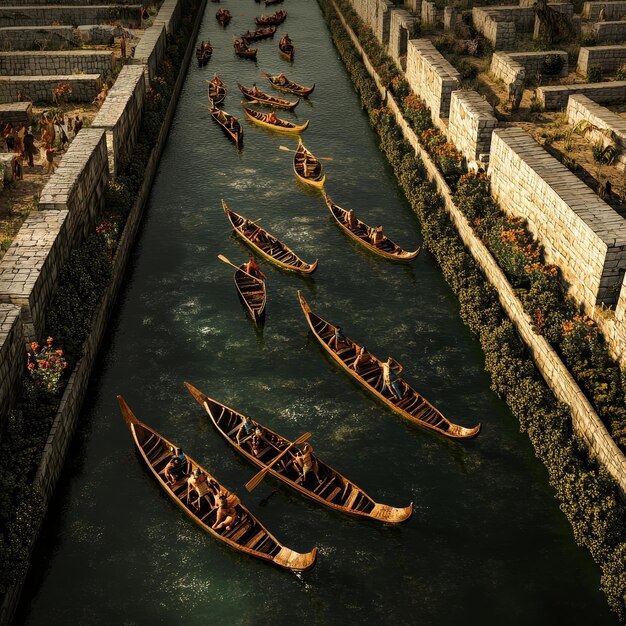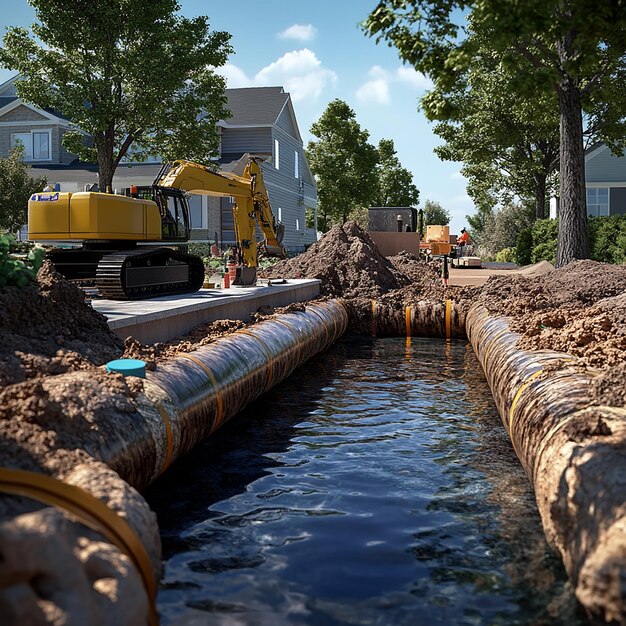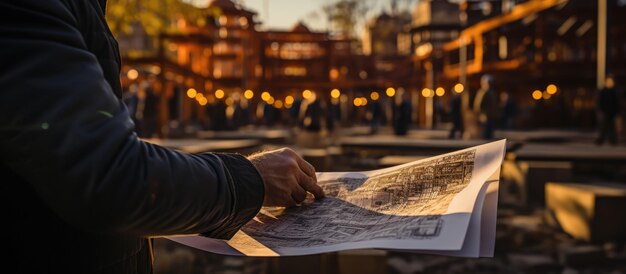Get Rid of the Navigli?
A Dream for the Entire 1900s
The Navigli di Milano, Milan’s historical waterways, were once the lifeblood of the city. They facilitated trade and transportation, connecting Milan to other major European cities via the Rhine and Danube rivers. However, as industrialization progressed throughout the 19th and early 20th centuries, the navigli began to lose their significance.
The Decline of the Navigli
With the rise of railroads and trucks, water transportation became obsolete. The navigli were neglected, and many sections were filled in to make way for new developments. By the mid-1900s, they had largely fallen into disrepair.
A Proposed Solution: Demolition
Given their state, some city planners and residents believed that the navigli were better off being demolished altogether. The land they occupied could be repurposed for modern infrastructure and housing.
Preserving Milan’s History
However, there were also those who recognized the value in preserving Milan’s history and restoring the navigli. They saw potential not only for tourism but also for creating a unique living space that would honor Milan’s past.
A New Vision: Reopening the Navigli
Instead of demolishing the navigli, a new vision emerged to reopen them. This would involve extensive cleaning and restoration efforts to ensure that the waterways were safe for both residents and tourists alike.
The Result: A New Lease of Life
Today, the navigli are once again an integral part of Milan’s urban landscape. They offer unique shopping and dining experiences, as well as boat tours that provide a glimpse into the city’s rich history.
Exploring Milan’s Historical Waterways: The Navigli
Milan, Italy’s fashion capital and financial hub, is renowned for its rich cultural heritage, innovative design, and stunning architecture. Yet, amidst the modern urban landscape, there exists a tranquil reminder of Milan’s past: the Navigli. These historical waterways have played a pivotal role in the city’s history, serving as vital transport routes for commerce and communication since the 12th century.
A Brief Overview
Originally built as a series of interconnected canals, the Navigli connected Milan to the Ticino and Po rivers, enabling the exchange of goods with other European cities. Over time, they became a symbol of prosperity and cultural development in Milan. However, with the advent of railways and modern roads, the Navigli fell into disuse and neglect.
The Debate
For decades, there has been a contentious debate about the future of Milan’s historical waterways. Some argue that they are relics of a bygone era and should be drained and replaced with modern infrastructure, while others believe that their restoration is crucial to preserving Milan’s cultural identity.
A New Vision
Recently, a proposal has emerged to reopen the Navigli and breathe new life into them. This vision includes transforming the waterways into vibrant public spaces where Milanese can gather, enjoy recreational activities, and learn about their city’s history. By reviving these historical waterways, Milan hopes to enhance its appeal as a must-visit European destination while preserving its unique heritage for future generations.
Stay Tuned
In the following sections, we will delve deeper into this ambitious project and explore its potential benefits for Milan’s residents and visitors alike.

Background: The History and Significance of the Navigli
The Navigli di Milano, or Milan’s canals, have a rich and intriguing history that dates back to the 15th century. Origins and Development: The Navigli were initially developed as Milan’s primary water transportation system during a time when roads were often treacherous and unreliable. In 1452, the Sforza family, who ruled Milan at the time, commissioned engineer Leonardo da Vinci to improve Milan’s waterways. Da Vinci designed a system of interconnected canals that allowed boats to travel from Lake Como to the Ticino River, providing an essential link between Milan and other parts of Lombardy. Over the next few centuries, the Navigli were expanded and improved upon, making them a vital component of Milan’s economic and cultural life.
Integral Part of Milan’s Cultural Heritage:
Throughout the 1900s, the Navigli continued to be an integral part of Milan’s cultural heritage and identity. They were a popular gathering place for locals and tourists alike, with many restaurants, bars, and markets situated along their banks. The annual Fiera di Sant’Ambrogio, a traditional fair held in September, drew large crowds to the Navigli each year. The canals also inspired numerous works of art and literature, solidifying their place in Milanese history.
Decline of the Navigli:
However, the decline of the Navigli began in the late 19th and early 20th centuries. With the advent of more reliable land transportation methods, such as trains and buses, the importance of waterways for transporting goods and people waned. Additionally, Milan underwent significant industrialization during this period, leading to increased pollution in the Navigli. By mid-20th century, many of the canals had become stagnant and polluted, and much of the area surrounding them fell into disrepair. Despite these challenges, there have been ongoing efforts to restore and revitalize the Navigli, transforming them once again into a beloved part of Milan’s cultural landscape.

I The Controversy: Proposed Solutions to ‘Solve’ the Navigli Problem
The Navigli, a system of canals that crisscross Milan, Italy, have long been a source of controversy and debate.
Discuss past efforts to address the issue
Throughout history, various plans have been proposed to address perceived issues with the Navigli. One such plan involved filling in the canals entirely to make way for urban modernization and new development projects. Another suggestion was to convert them into canals for wastewater treatment, arguing that this would improve public health and sanitation in the city.
Explore the motivations behind these proposals
The motivations behind these proposals were often driven by economic gain and urban modernization. Proponents argued that filling in the canals would allow for new buildings, roads, and infrastructure to be constructed, leading to increased property values and economic growth. Converting the Navigli into wastewater treatment canals was seen as a way to address Milan’s growing population and increasing demand for modern sanitation systems.
Highlight the opposition to these plans from various stakeholders
However, these proposals were met with significant opposition from various stakeholders. Preservationists argued that the Navigli were an essential part of Milan’s history and cultural heritage, and that filling them in would be a loss to the city. Residents living near the canals expressed concerns about the potential negative impact on their quality of life, including increased noise and traffic. Historians argued that the Navigli were an important part of Milan’s industrial past and should be preserved for future generations to learn from. Ultimately, these voices were successful in halting the proposed changes, but the controversy surrounding the Navigli continues to this day as Milan balances its desire for modernization and economic growth with the preservation of its historical and cultural heritage.

The New Proposal: Reopening the Navigli
The recent proposal to reopen the Navigli, Milan’s historic waterways, has generated considerable buzz in local circles. This initiative, which aims to breathe new life into these once-thriving waterways, is a collaborative effort between various stakeholders including the City of Milan, local businesses, and environmental organizations.
Goals and Proposed Methods:
The primary goals of the project include revitalizing tourism, boosting economic development, and promoting environmental sustainability. To achieve these objectives, the plan entails several key measures. Firstly, the Navigli will be dredged to ensure they can accommodate larger tourist boats and facilitate easier navigation for smaller vessels. Secondly, the waterways will be pedestrianized in certain areas to enhance their appeal as a tourist destination. Lastly, green spaces and public amenities will be developed along the banks to promote a more sustainable and livable urban environment.
Rationale:
The rationale behind the proposal is multifaceted. Reviving the Navigli has the potential to revitalize tourism in Milan, as the waterways are a unique selling point for the city. Moreover, by fostering economic development through increased business opportunities, the project aligns with the broader goal of making Milan a smart and sustainable urban center. Lastly, the reopening of the Navigli also promises significant environmental benefits, including the restoration of natural habitats and the reduction of flood risk.
Gaining Support:
The proposal has garnered significant support from various sectors. Local authorities have expressed their enthusiasm for the project, as it aligns with Milan’s broader urban development plans. The business community has also voiced its support, recognizing the potential economic opportunities that could arise from increased tourism and improved accessibility to the waterways. Lastly, the public has shown strong interest in the project, with numerous petitions and social media campaigns expressing their support for the reopening of the Navigli.

Challenges and Future Prospects
A. The proposal to reopen Milan’s Navigli canals for tourism and recreational purposes presents several challenges that must be addressed to ensure its success.
Funding Issues
One of the most significant obstacles is securing adequate funding for the project. The cost of restoring and maintaining the canals, as well as the development of related infrastructure, such as tourist facilities and transport systems, is substantial.
Logistical Difficulties
Another challenge is the logistical complexity of managing water traffic, ensuring safety and security for visitors, and minimizing environmental impact. This involves collaboration between various public and private entities, including city authorities, transportation agencies, and tour operators.
Resistance from Stakeholders
Resistance from stakeholders, such as local residents, businesses, and environmental groups, is also a potential issue. Concerns over the impact on property values, noise pollution, and potential disruption to daily life must be addressed through effective communication and community engagement strategies.
B. Despite these challenges, the successful reopening of Milan’s Navigli can bring about significant long-term benefits for both Milan and its inhabitants.
Increased Cultural Value
By preserving and showcasing the city’s rich historical heritage, Milan can position itself as a leading cultural destination, attracting tourists from around the world.
Improved Urban Livability
The reopening of the canals can also contribute to a more vibrant and livable city. By providing new recreational spaces, enhancing the urban landscape, and fostering a greater sense of community, Milan can become an even more desirable place to live and work.
Potential Economic Gains
Moreover, the tourism industry generated by the Navigli can provide significant economic gains for Milan. By boosting local businesses and creating new jobs, the project can contribute to the city’s long-term growth and development.
C. To ensure the success of this ambitious project, it is essential to explore possibilities for future collaborations and partnerships between various stakeholders.
Public-Private Partnerships
Public-private partnerships can be instrumental in leveraging resources, sharing risks, and ensuring the sustainability of the project.
City Authorities
City authorities can provide regulatory support, infrastructure development, and community engagement efforts.
Transportation Agencies
Transportation agencies can contribute expertise in managing water traffic, ensuring safety, and providing transport services for visitors.
Tour Operators
Tour operators can help promote the project to potential visitors, providing access to information and booking services.
Local Businesses
Local businesses can benefit from increased foot traffic, offering unique products and services to tourists. By working together, these stakeholders can help ensure the success of Milan’s Navigli reopening project, bringing about significant cultural, social, and economic benefits for the city and its inhabitants.

VI. Conclusion
In this article, we have explored the rich history and significance of Milan’s Navigli canals. Born out of necessity in the 15th century, these waterways played a crucial role in Milan’s economic prosperity and cultural development. From transportation of goods to the heart of the city, to the emergence of a vibrant social scene, the Navigli have left an indelible mark on Milan’s history.
Significance Reaffirmed
Today, the Navigli stand as a testament to Milan’s past, a source of pride and inspiration for its people. Their revitalization is not just about preserving history, but also about creating a modern, dynamic waterfront that can attract new investment and tourism. This balance between the old and the new is what makes Milan’s Navigli so unique.
A New Lease of Life: Proposed Solutions
As we move forward, it is essential to acknowledge the challenges that lie ahead in revitalizing the Navigli. However, with the proposed solutions such as public-private partnerships, innovative urban design, and sustainable development strategies, there is cause for optimism. These plans aim to create a livable, attractive waterfront that not only respects the historical and cultural heritage of the Navigli but also fosters economic growth.
Collaboration and Engagement: Keys to Success
To ensure a successful outcome, continued dialogue and engagement from all stakeholders is crucial. This includes local residents, businesses, city officials, and international organizations. By working together, we can create a thriving waterfront community that benefits everyone.
Ongoing Conversation: Inviting Your Input
We invite you, our esteemed readers, to join this ongoing conversation about the future of Milan’s beloved Navigli. Share your thoughts, ideas, and experiences with us. Together, we can help shape the future of this iconic part of Milan’s rich history.




